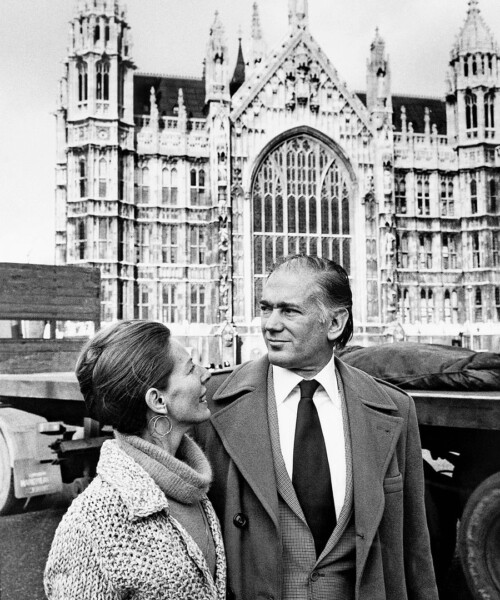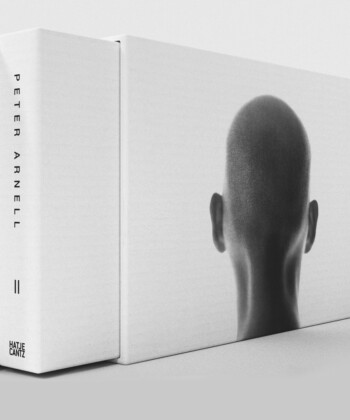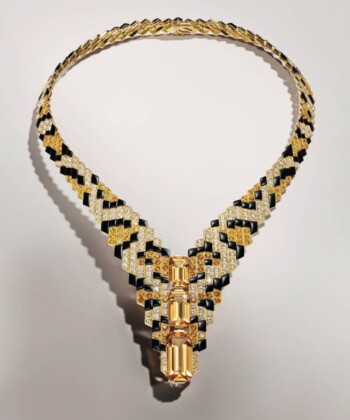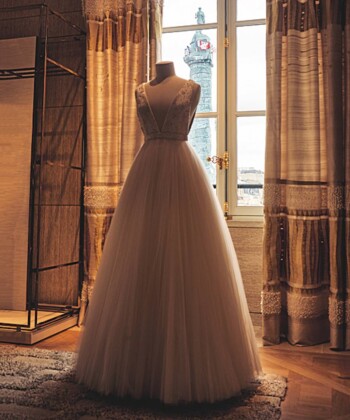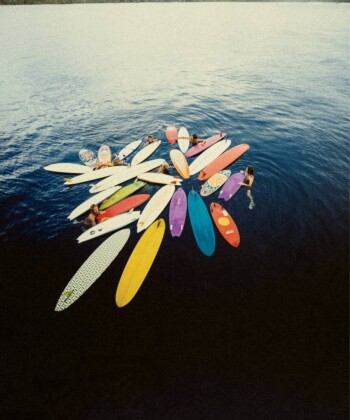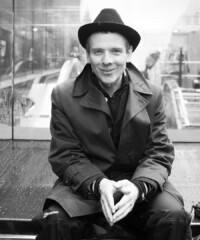“I had to go places inside myself I found unendurable,” Gail Sheehy tells me, looking tiny and incredibly vulnerable. We’re sitting in her cluttered office/apartment on Manhattan’s Upper West Side, eating tuna salad as we discuss the writing of her memoir, Daring: My Passages. The phone never stops ringing; a dog barks angrily in the kitchen; assistants scurry around. Suddenly Gail realizes there is no coffee for us, so she sprints out to Starbucks. It is, perhaps, a way for her to take a break from talking about those painful places.
Gail has written 15 best sellers, including the landmark 1980 nonfiction book Passages, which offered a road map to adulthood, as well as biographies of Hillary Clinton and Mikhail Gorbachev. She’s promoted books for decades and is a recognized master at it. But Daring, which describes her own journalistic struggles and triumphs as well as her two marriages, is different. After she returns with the coffee, Gail confides, “I’m nervous.”
I knew very well how difficult it was for Gail to write this memoir, a type of book that was, to her, like “finding a different language.” To find her voice, she’d taken a course with Roger Rosenblatt in the MFA program at Stony Brook University’s Southampton campus. He told her, “You have to become editor of your own life. It’s all about digging into your buried past.” The course helped, but Gail still struggled with the writing. She told me, “When you’re a journalist, you’re so busy reporting, you rarely stop and ask yourself, What does this all mean?”

Gail Sheehy, hitting the lecture circuit in 1977, the year after Passages was published
In early 2013 Gail decided it might help her process if we conducted a joint lecture on memoir writing at Rancho La Puerta in Mexico. (I’d published a memoir in 1998, Anything Your Little Heart Desires: An American Family Story, and was beginning work on a second memoir called The Men in My Life, forthcoming from HarperCollins.) When preparing our lecture in Mexico, I wanted to improvise, but Gail insisted we “script” it. We started writing at 7:30 a.m. and spent the day arguing. At one point, the power failed and Gail was forced to lug her computer down the mountain to get it fixed while I stayed behind, scribbling notes. At the end of this marathon, we were unsatisfied, and so that night, in the auditorium, I read from my published memoir and Gail read from a rough draft of Daring.
“Nobody has ever heard this,” she began tremulously. “The sudden memory so sharp it’s painful.… This is the mentor who sculpted my career, the lover who haunted me for decades, the husband who shared my life for 24 years, a man who never had time to sleep.”
When she finished, everyone in the auditorium was in tears, and Gail had discovered the heart of her book: the bittersweet experiences of life with her husband, the visionary editor Clay Felker.
Now, sipping coffee in Manhattan, Gail delved into that marriage. “When I met Clay, I was 24. I was plucky, selfish and determined to be a journalist.” Clay was “a big-shouldered man with a booming voice and piercing gray eyes.” He founded the hugely successful New York magazine. “He intimidated me, but we challenged each other with our ideas.”
By the late 1960s, Clay was nurturing an unruly tribe of ambitious young writers: Gloria Steinem, Tom Wolfe, Richard Reeves, Gail and myself, among others. Clay kept pushing us to bat out stories deconstructing celebrity, documenting pop culture, speaking out against the Vietnam War.

One of Gail’s water-cooler cover stories; Gail with Hillary Clinton, whom she profiled in a book revealing details of Clinton’s childhood and college years
That’s when Gail and I became friends. We’d hang out at Clay’s huge apartment on East 57th Street. The door was always open: Clay would be lounging in a big chair by the fireplace calling out, “Look who’s here!” when anyone came in. It could be Jimmy Breslin or Nora Ephron. We all talked a mile a minute about our pieces. Clay had me write about the then-unknown Dustin Hoffman, whom I’d discovered in an off-Broadway show; Clay also sent me to London to interview the Beatles.
As for Gail, Clay insisted she cover Robert Kennedy, who in 1968 was running for president. “I’d never written a political story before, but Clay said, ‘You can do it.’ It was my first big dare. I was terrified. But as luck would have it, a huge storm came up. Nobody wanted to get on a little plane that would be flying up over the Cumberland Mountains. So I got to sit next to [Kennedy] in the plane. It was the day before he was assassinated. I got the last interview.”
“Were you nervous?” I ask.
“Yes, but Bobby made me feel comfortable.” She remembers he was shivering; it had been raining hard when he was campaigning. He asked someone to hand him “Jack’s coat.” Five years after the assassination, Bobby was still mourning Jack’s death, wearing his brother’s clothes. The storm got worse; “all of a sudden we see this other plane coming at us. The plane plummets 1,000 feet —I’m screaming—and Bobby jokes, ‘I knew Gene McCarthy [his presidential rival] was desperate, but I didn’t think he was that desperate.’ ”
Her assignments varied widely. Gail wrote a controversial series on prostitutes and their pimps, “Redpants and Sugarman.” She also covered the bloody civil war in Ireland, where she confronted death for the first time when a young boy was shot in front of her. “I’ve never forgotten that image of his face being blown away.”
When she and Clay fell in love, they were both leery of commitment; they lived together on and off. Gail, divorced, was conflicted about feminism. “I wanted to hold on to my femininity, but I wanted to be independent.” Her most popular book, Passages, came out of her need to understand life’s changes. The book was a megahit, on the New York Times best-seller list for three years and published in 28 languages. Gail went into high gear: She became a regular on TV talk shows and lectured constantly.

Clay and Gail attending a black-tie event, the same day Clay was diagnosed with cancer
Meanwhile, Clay’s fortunes had shifted. In 1977 he lost New York magazine in a brutal takeover by Rupert Murdoch, and although he continued in journalism, Clay never regained the power or success he’d experienced at New York.
But now Clay wanted to settle down. In 1982, at his prompting, Gail adopted a Cambodian refugee girl named Mohm, and in 1984 Clay and Gail finally married: “the happiest day of my life.” For more than seven years they lived what she called an idyllic existence, raising Mohm and seeing a lot of Maura, Gail’s daughter from her first marriage. “We were really a family.” Then came a phone call: A cyst on Clay’s neck was malignant. “I wasn’t prepared. It began to dawn on me that my life was about to change drastically.”
For the next 17 years Gail functioned as Clay’s primary caregiver, somehow managing to write five more books and a play that my husband, Tom Palumbo, directed at the Actors Studio. Called Chasing the Tiger, it was about Clay and Gail battling with his cancer. The way they handled themselves was amazing—with dignity and grace. But at such a cost.
“What was it like for a supersuccessful woman to be so battered by tragedy?” I ask. “What did that do to you?”
“It was like the stages in Passages,” she says. “The hardest transition was when I faced the fact that Clay was never going to get well.” She began drinking; she even had an affair but told the man immediately that it couldn’t work, “because I love Clay.” Gail joined Alcoholics Anonymous. “Everybody attacked their problems with ferocious self-will. When that didn’t work, fear overtook them, or resentment, or both. I knew those feelings. In a fever to ‘save’ my husband, I was losing the ability to manage my own life.”
After Clay Felker died in 2008, Gail went through a hell of grief. Yet, once again, she found release from the pain in writing. The result is Daring: My Passages. As part of the book’s promotional campaign, Gail created the Daring Project online: She will encourage women to share their stories about achieving goals by moving out of their comfort zones.
“Is this your philosophy?” I ask my friend.
“Absolutely. Fear freezes you. When you dare, you take action and it frees you. And that’s what I’ve always done.”
MORE:
4 Lives Worth Reading About
Remembering Roger Ebert’s Incredible Life
Why Classic Literature Survives


























